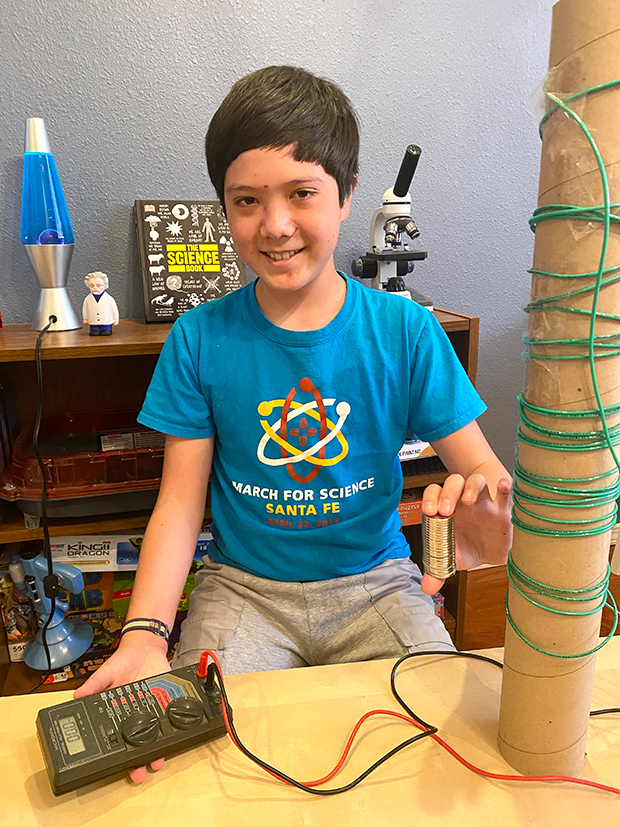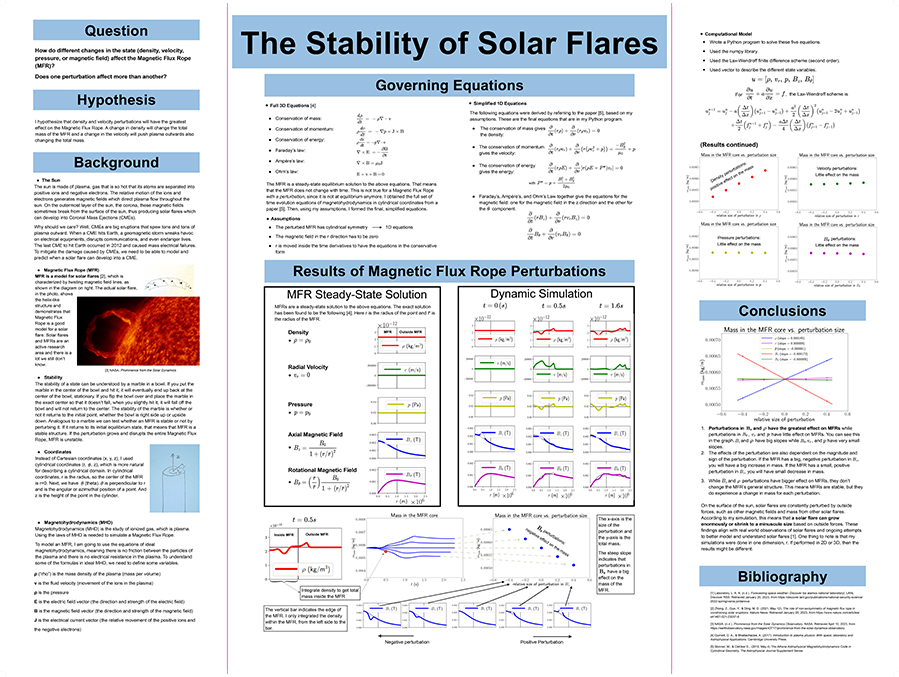Tate D. Plohr
8th Grade, Los Alamos Middle School
Los Alamos, NM
Tate examined factors that change solar flares’ stability.
The Stability of Solar Flares
VIEW POSTERProject Background
For the past few years, Tate has attended public lectures at a local nature center. One of them was about the sun. “I found out that the aurora borealis is actually a solar magnetic storm interacting with the Earth’s magnetic field,” Tate says. He wanted to know how solar flares could extend all the way to Earth’s atmosphere. These flares consist of plasma pushing out of the surface of the sun. Sometimes they can form coronal mass ejections, Tate says, which involves “big blobs of high-energy plasma that spew out in a random direction.” But when they hit Earth’s atmosphere, they can damage electrical systems, disrupt communications and even endanger lives. Tate examined factors that change solar flares’ stability by modelling them on a computer.
Tactics and Results
A common way to simulate a solar flare on a computer is with a magnetic flux rope, or MFR. It’s a theoretical long tube of plasma with magnetic field lines twisting around it, Tate says. These lines represent the direction of a magnet’s force. For simplicity, Tate assumed his MFR had cylindrical symmetry, meaning it was the same down the entire length of the tube and around the tube. One at a time, he altered five variables that affect an MFR, including density and pressure, to different degrees using mathematical equations. He wrote a Python program to solve the equations. For each trial, he measured the mass inside the MFR made with his perturbation added. Some variables changed the mass more than others. Altering the density or magnetic field running along the length of the tube had a big effect, whereas changing velocity or magnetic field wrapping around the tube did little. “I concluded that MFRs are stable but can gain or lose mass due to a perturbation,” Tate says. “This means after a series of perturbations, a solar flare can either grow tremendously or shrink to a minuscule size.”

Beyond the Project
For simplicity, Tate ran simulations based on if the magnetic flux rope’s tube had cylindrical symmetry, meaning it was the same all along and around the tube. That made it a one-dimensional problem. But he’d like to update his equations and code to run the experiment in two dimensions to make it more realistic.
Other interests
Tate enjoys learning advanced mathematics and playing tennis. He also loves music, especially playing piano. “I find that playing piano is very calming and helps me focus when I have a lot to do,” he says. Tate hopes to become an astrophysicist and study plasma. “Plasma physics is a very cutting-edge, future-career topic, and I am very, very interested in it!” he says.


